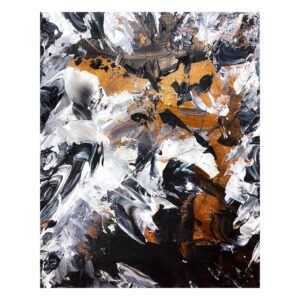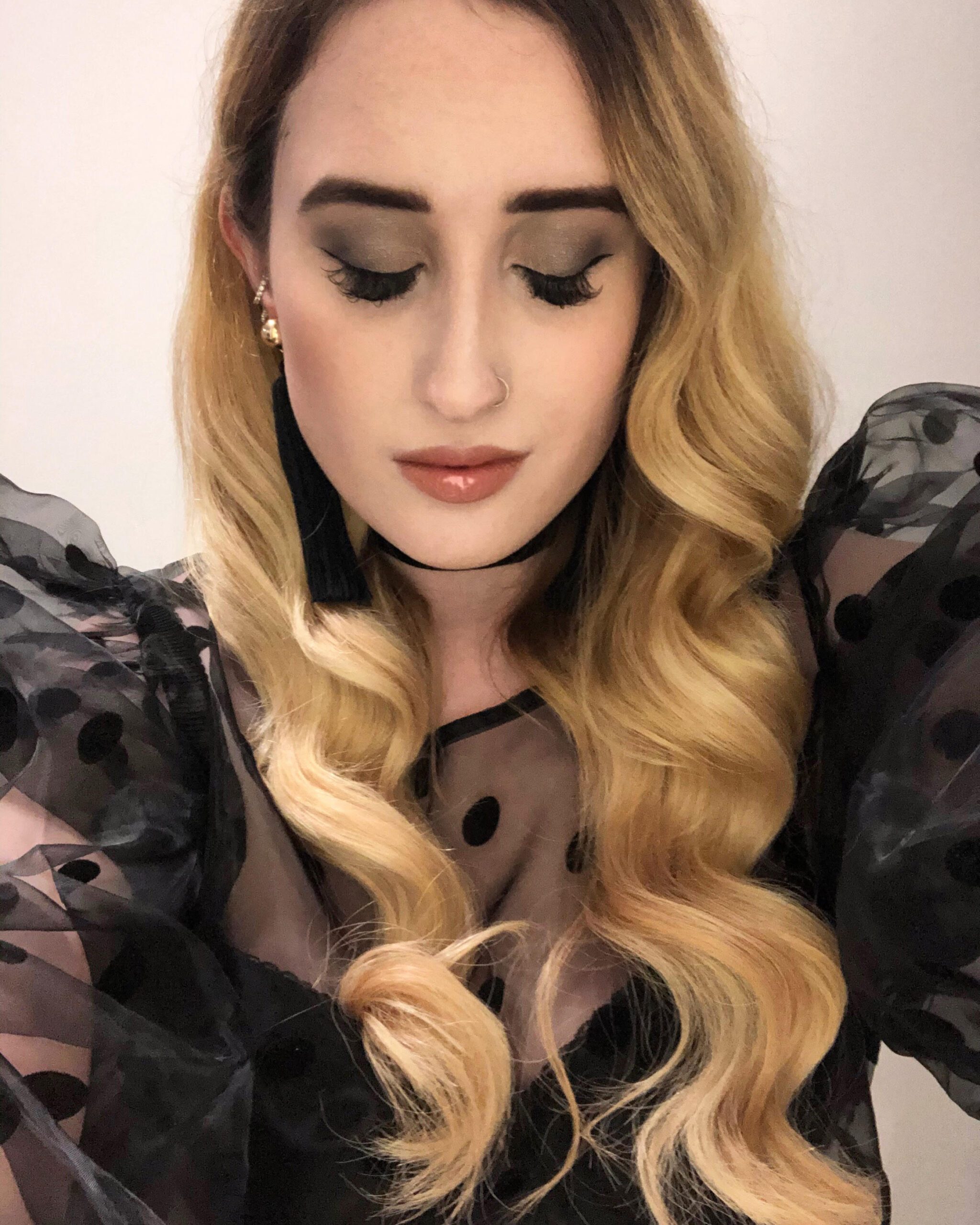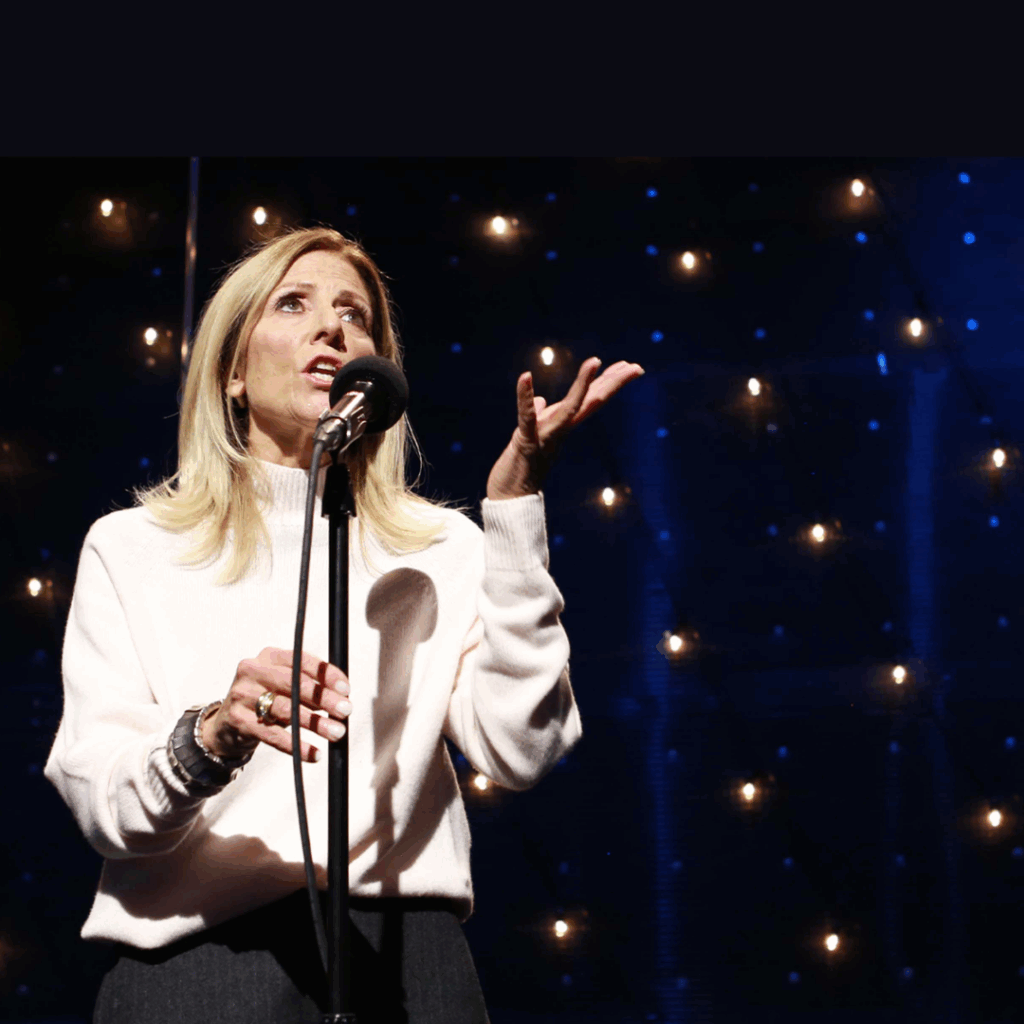It is often said that “a picture is worth a thousand words,” but what is art worth to a blind painter?
I’m Kimberley and I was born prematurely with underdeveloped optic nerves and congenital cataracts that were overlooked until I was four years old. I lived with severe sight-impairment, with only a small visual field in my left eye, until I went blind in 2018 through double retinal detachment. I now suffer with ongoing high pressures in both eyes, with frequent ocular migraines, and have a small shard of light perception at the top of my left eye.
Highs, lows, and coming to terms with next steps
As an illustrator interested in drawing for children’s books at the time, I was trying to progress onto the second year of my Bachelor’s Degree at Leeds Arts University. I even gained interest from a well-known book publisher in London. It felt like all of the stars were aligning and my childhood dreams were coming true! I had already lived through an incredibly difficult year by bearing witness to my mum’s severe stroke, immediately becoming her caretaker and taking the year out of university to do so. Surely the world wouldn’t be so cruel as to take my sight too? The black curtain and flashing lights of retinal detachment signaled yes. Yes, it could.
This traumatic time had drastically changed my life and, during the lengthy recovery process of four emergency surgeries, it was becoming increasingly apparent that the useful vision in my left eye wasn’t returning. I started to ask myself many questions. Did I want to return to university? How would I illustrate as a blind person? I wouldn’t be able to use a drawing tablet on the computer the same way as before. Did I want to create at all?
Even though I was fully supported and encouraged upon my return to campus, I struggled a great deal to come to terms with the trauma of losing my sight. I remember my peers were completing an animation module that I couldn’t partake in because of the inaccessible software and heavy visual element. I tried to problem-solve this with my tutor but it made me feel inadequate. My confidence was at its lowest and I had feelings of shame. There was a grieving process I had to go through and so I deferred yet another academic year.
I yearned for creativity but it was such a painful place to even consider visiting.
Developing a new artistic voice
After figuring my own systems to streamline daily life, and reaching personal acceptance, I returned to university and found that the modules had changed to be more open and inclusive. I began to develop my artistic voice through an authorial approach to creating: marrying my written words and paintings. I continued my degree in the knowledge that illustration can be any kind of tangible response. There is particular esteem and value in hand-made analog approaches.
I embraced an “art as therapy” healing approach through abstract expressionism. All of the gestures and mark-making is intentional as part of the performance with the materials and the canvas when listening to music or meditating on a thought. I find enjoyment in getting as involved as possible with the surface, using my hands and palette knife to scratch and scrape. It feels visceral and liberating, capitalizing on all of the senses. No sight is needed. When the canvas is dry, the paint becomes tactile and three dimensional – adding even more personal value.

8 x 10″ Canvas
2021
Painting is a powerful and proficient cognitive experience, giving me the space to work through the traumatic experience of going blind. I use myself as a vessel to express and communicate my feelings to reach a state of clarity. The creative process is a method of direct communication between my fractured heart and mind. This ideology is common among many artists and musicians.
I’m often asked why I paint when I cannot see and I give the same response: it isn’t about the final piece, in a visual sense, or the materials that I’m using to achieve an outcome. Art is healing. It helps promote relaxation, reduces cortisol and lowers blood pressure levels. It is human to create no matter who is doing the creating.
Sharing my work with the world
I began to share my work on Instagram, using alt text on all imagery, and found that being open, honest and vulnerable with my audience increased my authenticity as a painter. These are values that are important to me. My sighted audience are respectful and participate in communicating what they see in my paintings through the colors and shapes in the composition. I enjoy hearing how particular gestures are reminiscent of figures and plants. I recently built my first canvas frame, with help from the workshop manager at my university, before sizing and preparing for painting. Making my first canvas from scratch has provided me with a huge sense of achievement!
What is art worth to a blind painter? Everything. It is a continual journey of self-healing that has much more value now than it did before my retinal detachment. My relationship with art is intimate, emotional, challenging, and purposeful, and equips me with the tools I need to minimize my trauma with dignity. Connecting with an audience has elevated my self-worth and confidence and the future excites me!
Accepting and working with blindness has helped me to challenge my previous perfectionism and tap into something more engaging and profound.
About the Author
Kimberley Burrows is an abstract expressionist artist and painter from Greater Manchester, in the North West of England. Favoring acrylic on canvas, her portfolio is informed by intuition, emotion, lived experience, and rhythmic performance to music, rather than sight. She studies at Leeds Arts University and will graduate in the Fall with a Bachelor’s Degree in Illustration, before undertaking a Masters Degree in Fine Art next year. Kimberley won the Student of the Year Award at her institution in 2017 and, along with her Guide Dog, Tami, won the Life-Changing Partnership Award at the Guide Dog Awards in London.
You can find her paintings and her poetry on Instagram at @GleamedArt.



